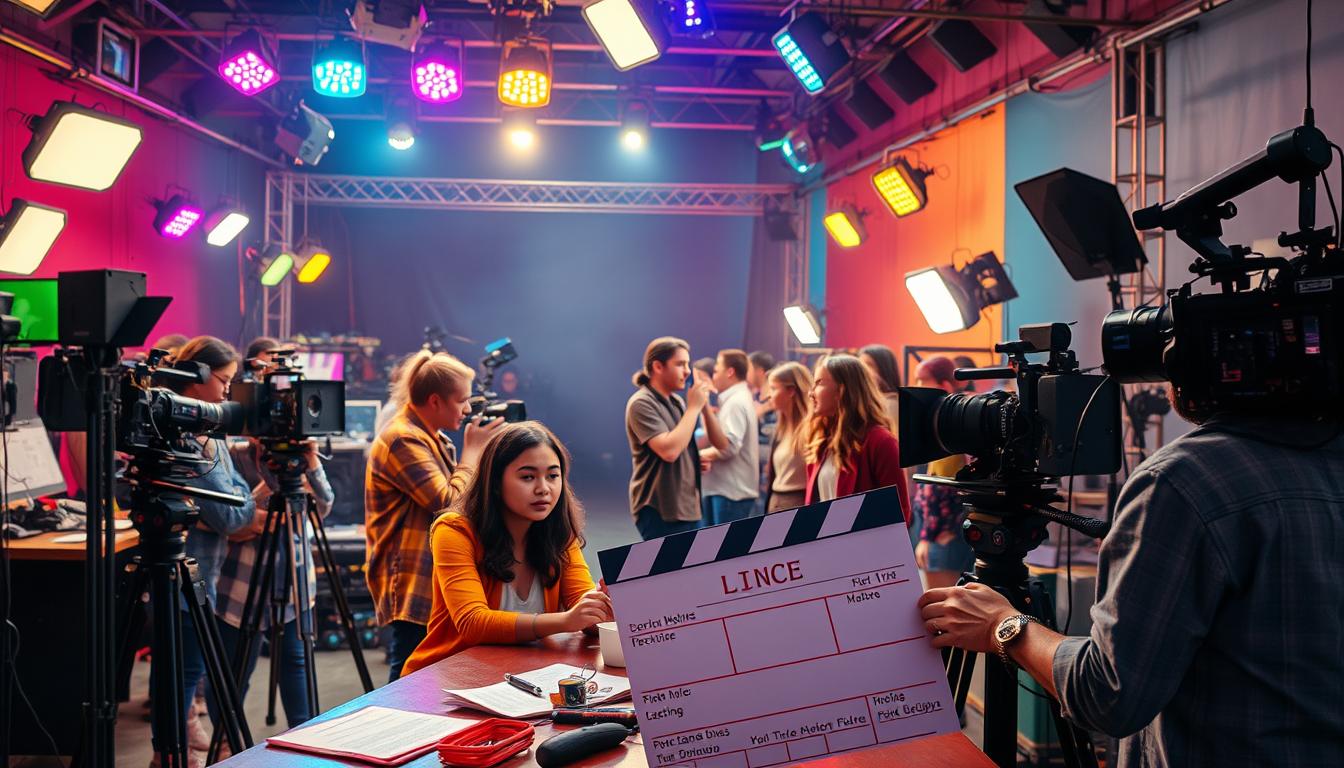
Film production is a fascinating and intricate process that brings stories to life on the silver screen.
Aspiring filmmakers often dream of creating their own cinematic masterpieces, but the journey from concept to completion involves a multitude of steps and a great deal of dedication.
In this comprehensive guide, we will explore the essential elements of film production, equipping you with the knowledge and tools you need to successfully navigate the complexities of bringing your vision to reality.
From initial planning and pre-production logistics to the filming techniques that capture the audience’s attention and the crucial steps in post-production and marketing, this article will uncover the secrets of successful film production, making it accessible for anyone eager to learn.
The BEST AI Screenwriting tool on the Internet!
Key Takeaways
- Successful film production begins with a thorough understanding of the entire filmmaking process.
- Pre-production steps are critical for setting a solid foundation for your film.
- Production design and careful planning significantly enhance storytelling and visual appeal.
- Effective shooting techniques can elevate the emotional impact of your narrative.
- Post-production and strategic marketing are essential for making your film accessible and successful in the market.
Understanding the Film Production Process
Understanding the film production process is essential for anyone interested in pursuing a career in the filmmaking industry or simply looking to appreciate the artistry behind their favorite movies.
The film production process can be broken down into three primary stages: pre-production, production, and post-production.
Pre-production involves extensive planning, where scripts are finalized, budgets are set, and the cast and crew are assembled.
This stage is crucial as it lays the groundwork for a successful shoot.
The production phase is where the actual filming takes place, with scenes being shot according to the planned schedule.
This stage requires coordination among various departments to ensure that everything, from lighting to sound, aligns perfectly.
Finally, post-production is where the magic continues, involving editing, visual effects, sound design, and scoring to create the final product.
Each phase plays a pivotal role in the overall success of a film, and understanding the complexities of the film production process can enhance one’s appreciation of the cinematic experience.
Essential Pre-Production Steps
When embarking on a film production journey, understanding the essential pre-production steps is crucial for ensuring a smooth and successful process.
The pre-production phase sets the foundation for your film, involving meticulous planning and organization that can make or break your project.
First and foremost, crafting a robust script is vital; it not only dictates the storyline but also influences the budget and resource allocation.
Next, assembling a talented team, including a director, producers, and key production staff, is essential to bring your vision to life.
Additionally, creating a detailed production schedule helps in managing time efficiently, while securing financing ensures that you have the necessary funds to cover various costs.
Location scouting, casting actors, and finalizing equipment rentals are also pivotal steps that need careful consideration.
By prioritizing these essential pre-production steps, you set a strong foundation for your film production, fostering creativity and streamlining the entire filmmaking process.
‘The best thing about filmmaking is that you can create a world in which anything is possible.’ – Ava DuVernay
The Role of Production Design and Planning
Production design is a critical element in film production that significantly influences the overall aesthetic and narrative of a movie.
It encompasses everything from the visual concept and set design to the costumes and props that populate a scene.
Good production design not only establishes the time period and location but also reflects the emotional tone and enhances storytelling.
A well-planned production design allows filmmakers to create immersive worlds that draw audiences into the story, making them feel a part of the action.
By closely collaborating with directors and cinematographers, production designers ensure that every visual aspect aligns with the creative vision.
In the realm of film production, meticulous planning is essential—from preliminary sketches and model building to on-set execution—ensuring that the design contributes meaningfully to the film’s success.
The BEST AI Screenwriting tool on the Internet!
Shooting Techniques for Effective Storytelling
In the realm of film production, mastering shooting techniques is crucial for effective storytelling.
The way a scene is shot can significantly influence the audience’s emotional response and understanding of the narrative.
Techniques such as framing, camera angles, and movement play a vital role in shaping the visual language of a film.
For instance, using close-ups can create an intimate connection with characters, drawing viewers deeper into their emotions.
Conversely, wide shots can establish the setting and give context to the story, allowing the audience to grasp the broader narrative.
Additionally, incorporating dynamic camera movements, such as tracking shots or handheld techniques, enhances the action and immerses viewers into the film’s world.
By thoughtfully combining these techniques, filmmakers can craft compelling stories that resonate with audiences, ensuring that every frame serves a purpose in advancing the film’s narrative.
Understanding and implementing these shooting techniques can elevate the quality of your film production, making it not just a display of visuals but a profound storytelling experience.
Post-Production: Editing and Finalizing Your Film
Post-production is a crucial phase in the film production process, where the raw footage is transformed into the polished final product that audiences see on screen.
This stage involves meticulous editing, sound design, and color correction to ensure that the film resonates with its intended message and mood.
During editing, filmmakers work with a variety of software to piece together scenes, creating a coherent narrative that maintains the viewer’s engagement.
Additionally, sound design plays a vital role; it involves adding sound effects, dialogues, and music to enhance the overall experience.
Color correction, another essential component of post-production, is where the visual aesthetics are fine-tuned to ensure consistency and evoke the desired emotional response from the audience.
By paying attention to these elements, filmmakers successfully finalize their projects, completing the film production cycle with a professional touch that captivates viewers.








